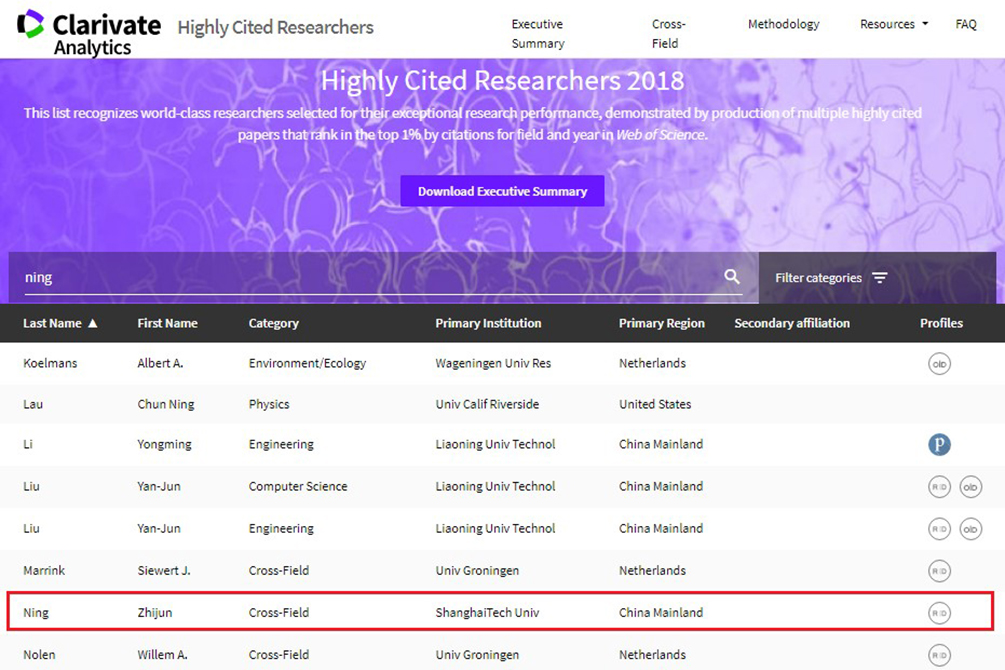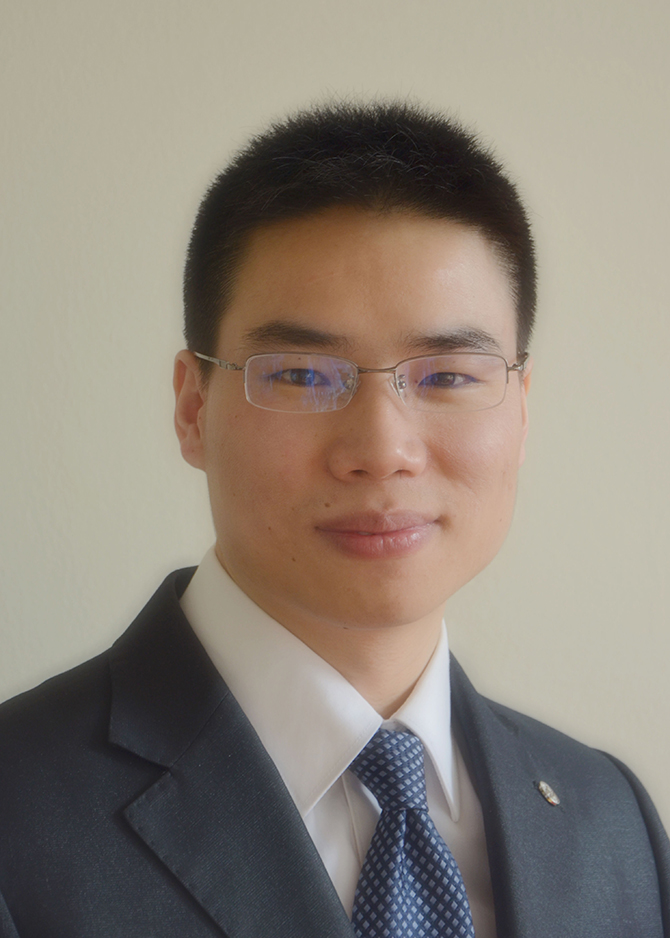On November 27th, Clarivate Analytics released its annual list of “Highly Cited Researchers, which selected 6078 researchers from 21 fields for their outstanding research performance, as demonstrated by production of multiple highly cited papers ranking in the top 1% by citations for field and year.
For the first time, this year the Highly-Cited Researchers list introduced a new Cross-Field category to identify researchers with substantial influence across several fields during 2006-2016. 2,020 researchers with Cross-Field impact were selected along with the other highly cited 4,058. SPST Assistant Professor Ning Zhijun was selected into the “Highly Cited Researchers 2018” list, demonstrating the remarkable progress in cultivating young talents and constructing interdisciplinary research platforms at ShanghaiTech University. Altogether 160 researchers from universities in mainland China were selected to the list in 2018.
Ning Zhijun joined the School of Physical Science and Technology of ShanghaiTech University in December, 2014. His research interests focus on solution-processed photoelectric functional materials and devices, including new materials synthesis, material surface modification and interface engineering, and device design and fabrication. Multiple disciplines such as materials, chemistry, physics and electric engineering are integrated in his research.
In recent years, Ning's research group has made important progress in interdisciplinary research with works published in well-known journals such as Joule, Advanced Materials, Journal of American Chemical Society, Advances in Functional Materials, Energy Environmental Science, and others. For photovoltaics, this team explored low-dimensional tin perovskite structures solar cells, which greatly improved the material stability and reduced the defect concentration. Due to the well-matched bandgaps and surface passivation, the reduced carrier recombination led to a fast extraction rate of electron at the interface. Based on the combination of the optimization of materials and device structure, the lead-free perovskite solar cell achieved a record power convention efficiency of 9.4%. For electroluminescent devices, low-dimensional perovskite structures with high luminescence quantum yield were designed and fabricated. High carrier injection efficiency was realized by optimization of carrier transport layers. Finally, a record efficiency of red-light perovskite quantum-dot light-emitting diodes were achieved. For photocatalysis, the defects of nanocrystals and carrier recombination were reduced through the rational design of organic surface ligands and element doping, giving rise to much improved hydrogen generation efficiency. Subsequently, the team developed a zero-dimensional quantum dot/two-dimensional MoS2 nanocomposite photocatalytic system for high performance hydrogen. This work improved the photocatalytic hydrogen production efficiency of narrow band gap and environmentally friendly nanomaterials.
Overall, ranking in the highly cited researcher can be ascribed to the great work of Ning’s team, as well as the interdisciplinary research platform supported by ShanghaiTech University. Ning's team is carrying out multidisciplinary in-depth cooperation with other groups of SPST in chemistry, physics and materials, aiming at accelerating groundbreaking research.




